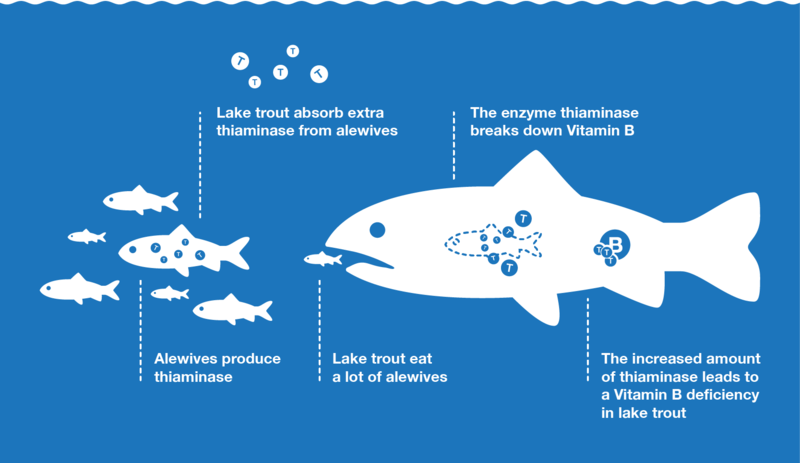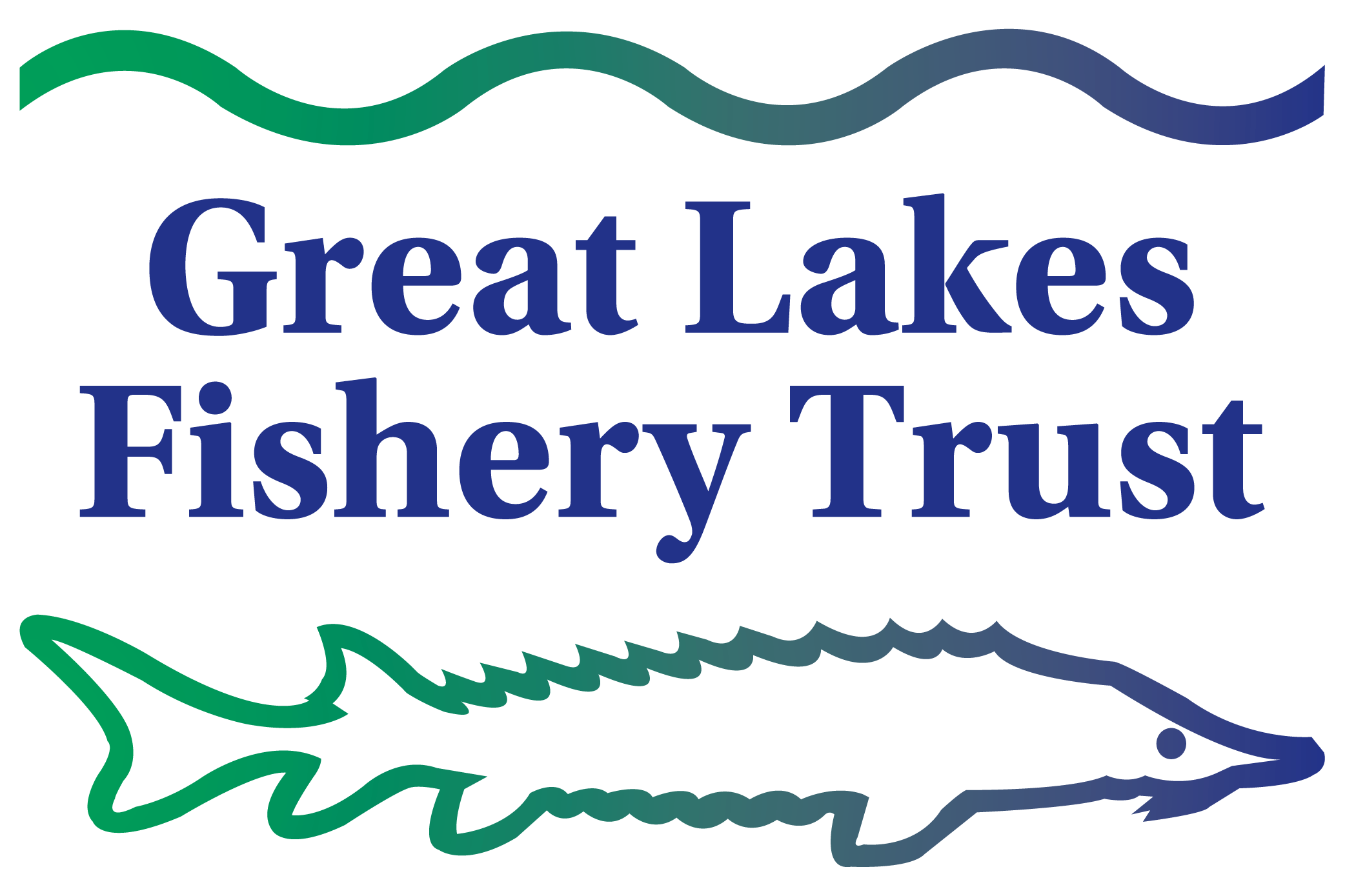
Grant at a Glance
In order to understand Thiamine Deficiency Complex (TDC)—which contributes to premature death in lake trout—researchers looked into whether certain fish genes produce thiaminase (a protein that breaks down vitamin B) de novo, or at a cellular level. Although lake trout rehabilitation in the Great Lakes is a fishery management goal, efforts to date have largely failed as a result of poor survival in early life stages, inappropriate stocking practices, insufficient adult numbers, and females producing eggs with low thiamine. This project will help scientists to recommend the next actions in order to reduce or manage TDC in Great Lakes fish.
The Angle
The researchers had three hypotheses for the study: fish produced thiaminase de novo, the thiaminase came from bacteria in the gut of fish, or it came from food the fish ate. Since the source of thiaminase was revealed, researchers have been able to better understand how fish develop TDC.
 The Nitty-Gritty
The Nitty-Gritty
Scientists first identified four candidate thiaminase genes: two genes in carp, one in zebrafish, and one in alewives. They chose these genes based on amino acid data from partially purified thiaminases. The researchers used standard methods to extract the protein from fish viscera, tissues, and bacterial cultures. With these processes, scientists discovered whether or not one or more thiaminase is produced in the fish species they studied.
The Results Are In…
The research shows, for the first time, there is a gene that produces thiaminase in a multicellular organism. Previously, the only gene known to produce thiaminase was found in a bacterium. Within Great Lakes fish, the exact thiaminase source was unknown. We now know that at least one gene from the zebrafish genome produces an enzyme with thiaminase activity, and a candidate thiaminase gene in alewives has been identified.
What Does It All Mean?
By researching and uncovering thiaminase sources, it is easier to understand TDC variation within Great Lakes ecosystems. This information will also aid scientists in developing management actions to reduce TDC and make up for population losses. If further research shows that de novo synthesis is the primary source of thiaminase in Great Lakes fish, then actions may include minimizing species that produce thiaminase, stocking lake trout in areas with low thiaminase-producing fish, or stocking lake trout in areas where thiaminase-producing fish are uncommon.




